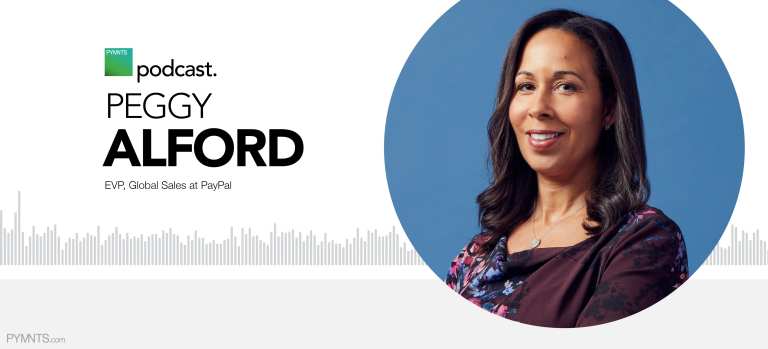
It’s not beginning to look a lot like Christmas just yet, as it’s still summer and warm weather doesn’t quite call to mind images of drinking hot chocolate, sitting by roaring fires or riding one-horse open sleighs. But even though consumers aren’t thinking about holiday shopping yet, many merchants are, Peggy Alford, PayPal’s executive vice president of global sales, told Karen Webster in a recent discussion. Retailers are trying to make themselves as ready as possible, given the highly unpredictable nature of the COVID-19 era’s commerce environment.
“I think ‘unique’ and ‘uncertain’ are absolutely the key terms here,” Alford said. “This holiday season’s going to be one for the books and going to be unique in so many ways.”
Consider Thanksgiving weekend. While U.S. holiday shopping has seemingly started earlier and earlier each year, Thanksgiving weekend has traditionally remained its gravitational center, serving as the season’s massive kick-off event.
But this year, Alford noted that many brick-and-mortar stores have already said they won’t open on Thanksgiving. The industry expects that much of the holiday weekend’s traffic will shift to digital — and likely remain there for the entire season.
Alford said that whether that shift extends the holiday-shopping season’s length, pulls it forward or otherwise alters its ebbs and flows, remains unknown — and in many cases will vary based on specific customers and individual merchants. However, she said that “no matter how [the season] specifically takes shape, it’s going to be important that enterprises have the right tools. Obviously, preparation is going to be the key here.”
Alford recommends that merchants focus on two areas. First, they need to emphasize increasing conversion and put systems in place to enable that. Second, they must enable customer choice “throughout the commerce journey, wherever it goes,” Alford said.
Filling In The Conversion Gap
Alford said cart abandonment was already a huge problem among online holiday shoppers last year before COVID-19 struck. For example, the cart-abandonment rate was 82 percent on 2019’s Black Friday, the key shopping date that occurs the day after Thanksgiving.
But Alford said that with economic uncertainty and competition for online customers currently off the charts, that number could easily go even higher this year. “Consumers have a lot of choices and they’re habituated into great deals,” she said. “So, I think that is part of the driver for high cart abandonment.”
Alford added that retailers also have to be “really careful about creating friction in the transaction process. What’s important in terms of preventing or reducing cart abandonment is having mechanisms in place to re-engage customers who abandoned their cart.”
Those mechanisms can vary widely. For instance, Alford said one technique PayPal’s Honey tool uses involves sending a customer who abandons a cart an email with an incentive like a discount code.
She said the overall goal is to use the right digital tools to stay close to customers. Merchants must be aware of what customers’ interests and needs are to understand what will motivate them to complete a transaction.
Alford said another critical competency that many retailers are building for this holiday season is an omnicommerce presence. The idea is that consumer journeys should proceed seamlessly through as many channels the customer chooses to engage with.
For example, Alford said that COVID-19 has “caused a real movement for offline retailers having to move into various ways to use their stores [to] enable this contactless-type shopping and offering curbside pickup. The idea of buying online/pick up in-store really took off, and what retailers are seeing is that that is a very viable option that consumers want. And what this does is really start to turn the stores into storefronts for merchandising that don’t necessarily have to have every single product available for consumers to browse through. We are seeing a real change in the set-up of the stores and the capabilities for fulfillment that’s driven by changing consumer demands.”
The Power Of Payment Choice
Alford added that consumer expectations would reach all the way to the payment experience. Given the coronavirus and the fact that more than 50 million Americans have filed for unemployment in recent months, consumer expectations for the payment part of their journeys have changed dramatically.
For instance, Alford said in-store customers want to pay in ways that make them comfortable, which requires contactless options. She said that’s why PayPal is so excited about a QR code product that it released earlier this year.
But Alford added that perhaps even more relevant is offering payment types that can help consumers feel like they’re “controlling their spending even while they are spending.” She said that for many consumers, that means offering installment payments.
“Consumer demand right now is for responsible credit options,” Alford said. “For them, buy now pay later [is] more than just credit, it’s flexibility of payment. In these economically uncertain times, the desire for many people — especially our young folks — is they don’t want to go into debt or risk it, but do need spending flexibility.”
She said many consumers would especially need such flexibility during this year’s holiday-shopping rush and beyond because the changes we’ve seen are less likely to fade away with every day that they continue.
After all, many consumers have rehabituated their lives to a digitally powered existence. Finding ways to power that transition securely, smoothly and flexibly is the ultimate gift that retailers will have to give their consumers for the holidays this year — and probably every day after that.
“What we’re going to see is that because of how frictionless and easy digital commerce is to use and how safe it is, it becomes the new way of paying and the new way of shopping — especially as the pandemic continues and this behavior becomes habitual,” Alford said.